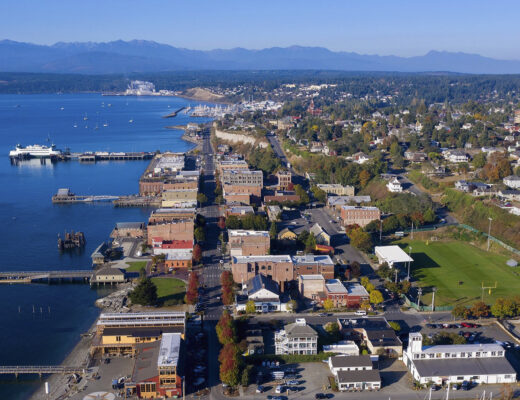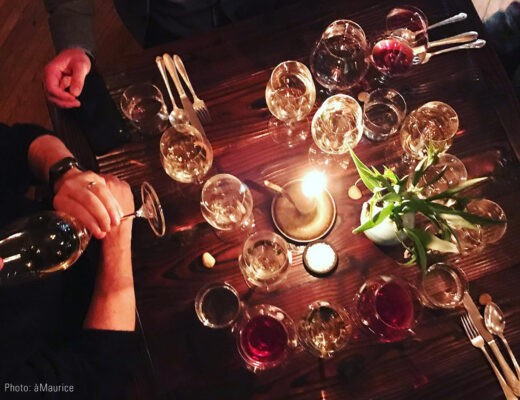Seattle’s Chinatown-International District (CID), just east of Pioneer Square, has been a hub of the city’s Asian community since the 1860s, when immigrants were first attracted to the area. Today the district offers a number of fun diversions, with an exceptionally good history museum, top-notch Asian foods restaurants, a lively mix of shops selling imported wares … and even a pinball museum.
You’ll immediately know you’re in the CID by the colorful dragons spiraling up poles on street corners and the highly decorated, towering Chinatown Gate at South King Street. Here are our favorite spots to visit:
WING LUKE MUSEUM
Wing Luke Museum, a Smithsonian Institution affiliate that rambles over three floors, reveals the poignant history of Seattle’s Asian Americans, Native Hawaiians and Pacific Islanders who flocked here in the mid-19th century for jobs in the fishing, logging and mining industries, and the many challenges they and their children faced over generations. The museum also brings visitors forward in time to showcase the art and culture of the vibrant, multi-ethnic community that exists here today. The Wing Luke Museum absolutely knocks it out of the park with spellbinding storytelling and interactive elements. After spending an afternoon here, I was left wondering why this fascinating museum isn’t near the top of every visitor’s must-see list—it’s that good.
The Chinatown-International District makes for a great spot to visit any time of year, but the annual Lunar New Year Celebration (Saturday, February 24, in 2024) is nothing short of thrilling, with the streets packed with celebrating families and Hing Hay Park buzzing with martial arts, Taiko drumming, and music and dance performances. The exciting dragon dance, with a fierce-looking dragon that leaps and lunges, tops off the festivities.
I highly recommend taking one of the Wing Luke Museum’s guided tours to gain deeper insights. The Museum and Historic Hotel Tour takes you to preserved historic spaces, including immigrant living quarters in a historic hotel and a remarkable recreation of a historic Chinese store. The museum also offers a Chinatown walking tour and food tours.
UWAJIMAYA
At the heart of the CID, Uwajimaya is a massive grocery store and shopping complex that’s so much more. You can get lost in the grocery aisles filled with imported products you won’t find anywhere else and ogle all kinds of foods you don’t see in grocery stores every day. You’ll find an astonishing collection of ramen from many different makers, a robust selection of sakes from nearby and around the world and a vast variety of snack foods. Locals often shop here for seafood; Uwajimaya’s live tanks are stocked with clams, oysters, crab, lobsters and more, including highly coveted spot prawns, when in season.
Uwajimaya has a fabulous kitchenware and gift section with everything from beautifully patterned rice bowls to Hello Kitty products to stunningly intricate silk bathrobes and kimonos. When she was in her teens, my daughter, Kit, and I made regular pilgrimages to the Kinokuniya bookstore inside Uwajimaya, for anime books. The shop has lots more than books, though. While she was perusing the anime aisle, I would shop for gifts such as plushies and origami sets.
TRADITIONAL FOODS OF MANY LANDS
Uwajimaya has a fantastic food hall with a dozen food stalls offering everything from Vietnamese and Thai food to Korean, Hawaiian, Japanese and more. It’s cafeteria-style and can be busy at lunchtime, but it’s a great spot for everyone to get exactly what they most enjoy, whether poke, sushi, a Vietnamese stir-fry or mochi doughnuts and bubble tea.
When I was young, every time my family visited Seattle (we lived on the Olympic Peninsula) we always enjoyed a meal at a traditional Japanese restaurant in the CID, where we would indulge in course after course of deliciousness seated around a table in a tatami room complete with a sliding shoji door. Today, Maneki, which dates back to 1904, is hands-down the place to go for a top-notch traditional Japanese feast, and their tatami rooms (which you have to book in advance) add to the cultural experience. Please note that Maneki closed for building upgrades in late 2023, but their Facebook page notes that they will reopen in 2024. It’s worth watching for.
The historical novel Hotel on the Corner of Bitter and Sweet, by Jamie Ford, is set in Seattle’s Chinatown-International District, and it illuminates how Japanese families living in the district during WWII were sent to concentration camps, as told through the eyes of a young Chinese-American boy and the Japanese-American girl he loved. A parallel story line is about the boy as a grown man with a son of his own. I highly recommend this book. It’s an absolutely gripping story.
There are several dim sum spots in the CID, and one of the best is just a couple of doors away from Wing Luke Museum. Harbor City restaurant offers mouth-watering barbequed pork and duck with crispy, deeply lacquered crusts, Cantonese specialties and a wide array of delicate dim sum. The dining room has all the ambiance of a banquet room and rolling dim sum carts everywhere disappeared with the coronavirus, but you’ll find some of the city’s best dim sum here, whether dumplings, steamed buns or rice noodle rolls filled with shrimp, pork and other morsels.
SEATTLE PINBALL MUSEUM
Whether or not you have kids along, you can wrap up your Chinatown-International District visit with retro fun and games at the Seattle Pinball Museum, which boasts the largest collection of pinball machines in the state. The museum, actually more of a games arcade, is a bit off the beaten path—west of I-5, which slices through the middle of the CID—but it’s well worth seeking out. Once you pay the admission fee, you can enjoy unlimited games on machines dating from the 1960s to the present, for as long as you like. It’s the perfect topping-off treat in a neighborhood filled with delights.




